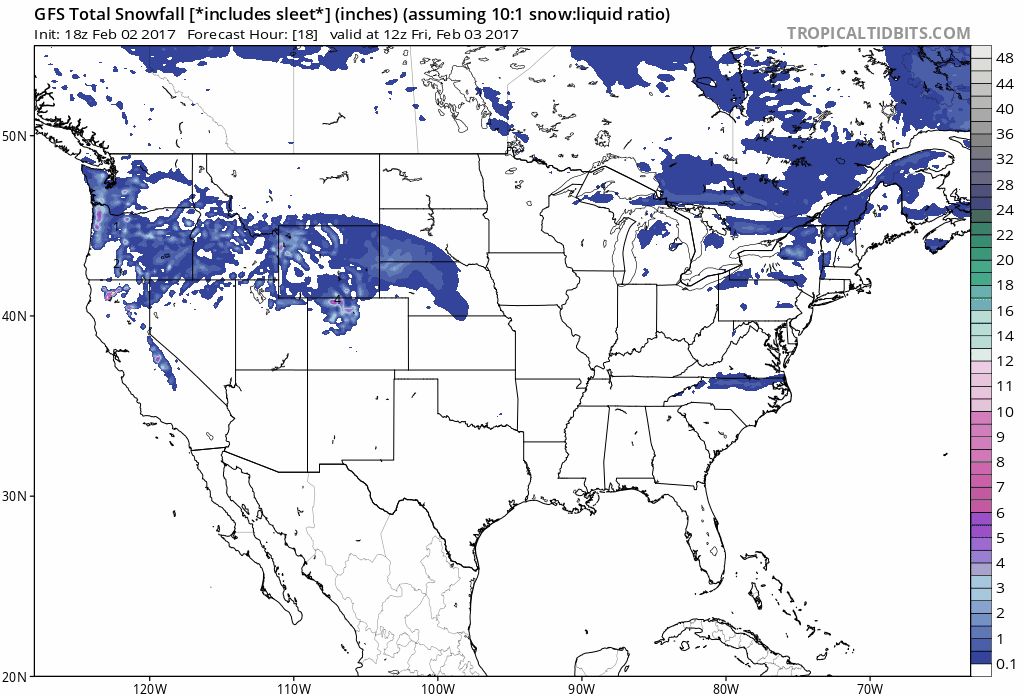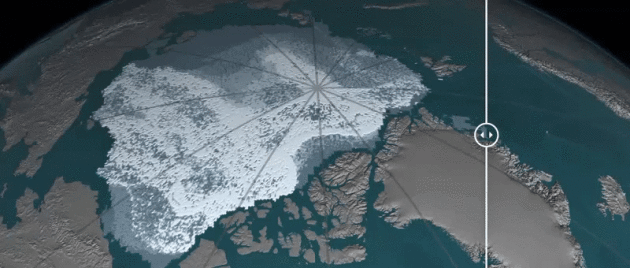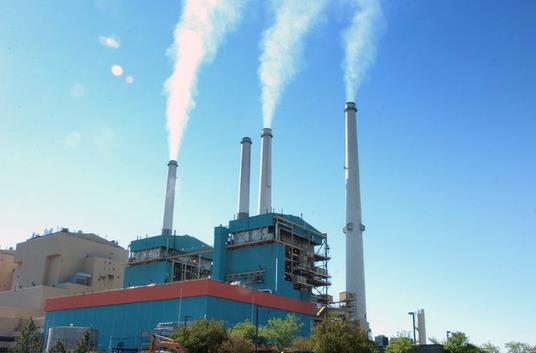17 F. maximum temperature in the Twin Cities Thursday.
25 F. average high on February 2.
30 F. high on February 2, 2016.
February 3, 1989: Bitterly cold temperatures occur across Minnesota with lows in the 40-below-zero range in the north.
February 3, 1947: A strong dust storm hits Crookston with winds near 50 mph. Visibility was reduced down to 300 feet.
Sorry Punxetawney Phil: Spring May Come Early
It took the better part of 50 years for cars to replace horses. Manure and bugs gave way to smog, congestion and sprawl - but for most this fit the definition of progress.
It took the better part of 50 years for cars to replace horses. Manure and bugs gave way to smog, congestion and sprawl - but for most this fit the definition of progress.
In
spite of high drama and political disruption I'm actually optimistic
about the future, for 2 main reasons. The price of clean renewable power
(solar, wind, etc) is now cheaper than fossil fuels. And younger people
generally aren't cynical; they're more likely to respond to evidence
and facts - and do things differently than their parents.
I'm
a Teddy Roosevelt conservationist who predicts a lower carbon future
will be driven by economics and security, not politics. That's a message
I'm sharing at today's 5th annual Minnesota Environmental Congress.
Sorry
Phil, 6 more weeks of winter may be a stretch, even for Minnesota.
Models suggest an almost March-like February with a run of 40s, even an
outside shot at 50F in 2 weeks close to home. Not as balmy as 2012 but close.
In the meantime models still hint at a plowable snow next Tuesday. It's too early for details, but take advantage of any snow, because odds are beginning to favor a fast-forward spring.
CFSv2 climate model temperature anomaly forecast for February: NOAA.
Snow Drought for Much of Minnesota. Here's an excerpt from the Minnesota DNR: "Snow depths
across Minnesota range from areas of bare ground across parts of
central, southwest and south central Minnesota, to a foot or more of
snow on the ground in the northeast and far northwest. Snow depths of
six to ten inches can also be found in southeast Minnesota centered near
Rochester. The snow depth ranking is below historical averages across
much of southern and central Minnesota, with some pockets of above
average ranking over southeast and far northeast Minnesota."
Photo credit: "-60 was Big News in February 1996." Courtesy: St. Paul Pioneer Press and Minneapolis Star Tribune.

Future Radar. 12 KM NAM guidance shows a big bubble of high pressure over the central Plains pushing into the Mid Atlantic region by the weekend; lake effect snows slowly tapering with a little rain for Texas. Heaviest rains and mountain snows fall from northern California into the Pacific Northwest.

Snowy Possibilities. And that's all they are now - possibilities. Confidence levels are still low, but GFS data suggests a plowable snow from Minnesota into Wisconsin and the Great Lakes Tuesday and Wednesday of next week, then spreading into New England. Snow for the Mid South andn Carolinas late next week? I wouldn't put down any wagers just yet. Meanwhile a safe bet calls for a few more FEET of snow from the Colorado Rockies to the Sierra and Cascade Range. Animation: Tropicaltidbits.com
Winter Snowfall Totals, To Date. The Eastern office of the NWS compiled actual snowfall totals as of February 1, compared to normal and last winter. Lake effect has been more impressive, but there haven't been any big coastal storms, no snowy Nor'easters to speak of - yet.
Map credit: "Spring leaves are popping out more than 20 days ahead of schedule in parts of the Southeast." (USANPN).

Photo credit: "January storms in the Sierra Nevadas reduced California's deficit in stored snow water by about 37 percent." Credit: Flickr user Perfect Zero, CC BY 2.0.
Map credit: "These maps show how much water was stored in the Sierra snowpack on Jan. 6 (left) and Jan. 24 (center), 2017. Darker colors indicate more water. The inset bar graph in the center figure shows the annual snowpack water storage relative to the pre-drought average as well as the cumulative snow-water deficit. The map on right shows snowpack water storage on Jan. 24 as a percentage of pre-drought average snowpack water storage at its greatest. Areas in green are over 100 percent of average." Credit: CU/NASA.

Photo credit: "Daniel Baggett will forever have a reminder of that incredible force in the form of a grade school drawing." (Photo source: WLOX)
Yosemite's Tragic History of Flooding, and the Steps Its Taken to Prevent Future Disasters. Capital Weather Gang has an interesting article and video link; here's an excerpt: "Twenty
years ago, nearly two feet of warm rain fell on a deep, Sierra Nevada
snowpack, resulting in the worst flood in Yosemite National Park’s
history. The sudden inundation washed out roads, campgrounds, lodges and
utilities, and it stranded several thousand stunned visitors and
employees in the narrow Merced River valley. “Boulders the size of
houses were rolling down the swollen Merced River,” said park spokesman
Scott Gediman, who was in his first year on the job in January 1997. The
force of the raging water destroyed everything in its path. He recalled
how odd it was to see picnic tables, bear boxes and even fax machines
floating through the park. The river burst its banks on New Year’s Day.
The water level in the valley peaked at 16 feet over flood stage,
inundating park infrastructure..."
Image credit: "During
floods in May 1996 and January 1997, the roar of thundering Yosemite
Falls rattled windows at the park offices a half mile away." (U.S. National Park Service).
The Deep History of California's Catastrophic Flooding. NexusMedia has the context and perspective: "...As
the climate warms, I’m definitely concerned about what might come next.
California has been growing in places, like the Central Valley and the
Delta. Parts of the Delta are below sea level because it has been
sinking. The Central Valley has also been sinking because of groundwater
pumping, and some parts are 30 feet deeper than in 1861. It’s so much
worse now — there are more than 6 million people living in the Central
Valley alone. In 2011 the USGS presented the ARkStorm
[Atmospheric River 1,000 Storm] scenario to model the impacts of an
1861-type storm, at the time thought to be a 1,000-year event. They
modeled the storm with today’s geography and where people are living.
The bottom line is damage totaled more than $700 billion..."
Photo credit: "The 1986 flooding of the Russian River in Sonoma County, California." Source: U.S. Army Corps of Engineers.
Photo credit: "Rep. Paul A. Gosar (R-Ariz.) said in 2013 that the head of the Environmental Protection Agency should be impeached." (Matt York/AP)
Energy is the New Internet. I happen to agree with Brian LaKamp at totempower.net: "...At
heart, the Enernet is the foundation for smart-city tech, including the
“Internet of Things,” distributed systems, interconnected backbones and
networking technologies, EV-charging services and autonomous vehicles,
to name a few. These technologies will drive dramatic change and force
us to rethink our cities, municipal services and sectors like
transportation, insurance, real estate and financial services. From the
Enernet evolution will come smart cities that are an order-of-magnitude
smarter, healthier and safer. The new network will also present quantum
leaps in energy security and emergency resilience that can stand in the
face of superstorms or cyberattacks. Hold on to your seats. We’re at the
early stages of something immense..."
Tesla Drops "Motors" From Name in Bid for Clean Energy Supremacy. ThinkProgress has details: "...Musk
has positioned Tesla in the sweet spot of three emerging
trillion-dollar industries—electric vehicles, solar power, and battery
storage. If you count the race towards fully autonomous vehicles, which
EVs are likely to dominate,
Tesla hits four major growth sectors. By 2025, there are expected to be
more than 37 million fully electric vehicles on the road worldwide,
according to Navigant Research,
and they will be “cost competitive” — without subsidies. Bloomberg New
Energy Finance (BNEF) has projected that by 2040 between a third and a
half of all new vehicles could be electric. It’s no surprise, then, that
last year, Tesla’s affordable, long-range Model 3 saw the most presales of any car in U.S. history..."
Report Cites Clean Energy Growth as Minnesota Legislators Push To Eliminate Solar Program. May the best (cheapest/cleanest) technology win. Here's an excerpt from Midwest Energy News: "A
new report aims to persuade Minnesota legislators that clean energy is a
strong part of Minnesota’s economy. Minnesota has 131 companies in the
supply chains of the wind and solar industries, according to the report,
“Minnesota Wind Power & Solar Energy Supply Chain Businesses:
Good for Manufacturing Jobs, Good for Economic Growth and Good for Our
Environment,” released today by the Environmental Law and Policy Center.
The report shows “there a lot of Minnesota companies are growing and
expanding because of our renewable energy policies and there are
companies coming to Minnesota because of them,” said Rep. Melissa
Hortman, who is the Democratic House Minority Leader. The report does
not directly connect to bills under consideration but instead offers
statistics and a narrative describing how the state has become a
national leader in clean energy..." (File image: Fresh Energy).
Republican Legislators Take Aim at Public Utilities Commission. Minnpost has more perspective: "...Republicans
say the commission has a metro-heavy representation and bogs down
critical state projects with bureaucratic red tape. “This is just the
tip of the iceberg,” said GOP Rep. Jim Newberger, who authored one the
proposals to go around the PUC. But church leaders and clean energy
groups, among others, are opposing the bills, saying they set a
dangerous precedent by weakening the only check on the state’s monopoly
energy system. “They all look like small changes but they all add up to a
big change in utility regulations,” said Annie Levenson-Falk, executive
director of the Citizens Utility Board, a newly-formed organization
that advocates for energy consumers in Minnesota. “There’s no market so
the checks on that market are so important. The PUC is that check...”
Photo credit: MinnPost photo by Corey Anderson. "Republicans
have introduced a half-dozen bills that would change the power and
makeup of the Minnesota Public Utilities Commission."

Oil and Coal Demand Could Peak by 2020: Study. Here's an excerpt of a summary at CNBC.com: "...The
research sees, among other things: solar photovoltaic technology
providing 29 percent of global power generation by 2050, phasing out
coal in the process; electric vehicles making up more than two thirds of
the road transport market by 2050; and demand for coal and oil peaking
by 2020. Furthermore, growth in electric vehicles could result in the
displacement of around two million barrels of oil per day by 2025 and 25
million barrels per day by 2050. "Electric vehicles and solar power are
game-changers that the fossil fuel industry consistently
underestimates," Luke Sussams, senior researcher at Carbon Tracker, said
in a statement..."
Expect The Unexpected. The report from Grantham Institute referenced above (52 page PDF) is here.

Lawmakers Could Find Common Ground on Energy Infrastructure Upgrade. Can Republicans and Democrats find common ground? Here's an excerpt from NexusMedia: "It’s pretty hard to identify any areas of cooperation between Democrats and Republicans right now, but one thing they both agree needs addressing is our nation’s infrastructure. It’s no secret that our many of nation’s roads, highways and power lines are out of date and in many places outright dangerous. America’s infrastructure earned a D+ on the American Society of Civil Engineers’ 2013 “Infrastructure Report Card.” The country’s dilapidated infrastructure costs households around $3,400 annually. Crumbling roads slow commutes and aging electricity grids make power bills more expensive. Notably, the nation’s energy system earned a lower grade than its bridges, ports and railways. Modernizing the electricity grid would improve resilience in the face extreme weather and cyber attacks, expand access to clean wind and solar energy, and shrink monthly power pills..." (Image credit: Pexel).
States Expected to Continue Course Toward Clean Energy Future. Here's an excerpt of a post at the PEW Charitable Trusts: "...The states have always led the country toward greater reliance on renewable energy sources, and they will continue to do so even if they don’t have the support of the incoming administration, said Gabe Pacyniak, a program manager at the Georgetown Climate Center, which helps states implement clean energy policies. Economic factors, such as the rapidly declining cost of wind and solar production, will help continue that trajectory, Pacyniak said. In the last two months alone, the Republican governors of Illinois, Maryland, Michigan, Ohio and Vermont have announced initiatives or signed bills that will push their states to increase their use of renewable energy. These are well-respected, “card-carrying conservatives who understand the benefits of the clean energy agenda,” said former Democratic Gov. Bill Ritter of Colorado, who is now director of the Center for the New Energy Economy at Colorado State University..."
Photo credit: "A worker installs solar panels on a roof in Honolulu. More states will encourage the use of renewable energy this year, seeing the economic benefits the industry brings." © The Associated Press.
- Housing — rental prices for a one-bedroom apartment, rounded to nearest dollar.
- Percentage of retirees — in the local population as of April 1, 2010.
- Walkability — scores ranging from 25 for Montgomery, Ala., to 65 for Allentown, Pa.
- Safety factors — scores ranging from 6 for Rochester, N.Y., and Louisville, Ky., to 30 for Boise, Idaho.

What On Earth is a "Tornado of Tuna"? You learn something every day - this nugget courtesy of Atlas Obscura: "A couple of times a year in the waters of Mexico’s Sea of Cortez, a colossal column of tuna churns slowly in an underwater fish vortex. The tunnel of over 100,000 Jack Tuna, or bigeye trevally, is large enough to cast looming shadows across the ocean floor. The clip above gives us a rare glimpse of what it’s like to be under this huge “tuna tornado.” At the 19-second mark, the camera is swallowed by the swirling silver mass. Each tuna averages over three feet in length. This fantastic phenomenon is the result of the tuna’s mating behavior..."
TODAY: Sunny and cool. Winds: W 8-13. High: 23
FRIDAY NIGHT: Clouds increase. Low: 12
SATURDAY: Dusting of flurries, milder breeze. Winds: S 10-20. High: 33
SUNDAY: Mostly cloudy. Atlanta by 3. Winds: NW 5-10. Wake-up: 21. High: 28
MONDAY: Overcast, still mild for early February. Winds: E 8-13. Wake-up: 22. High: 34
TUESDAY: Wet snow, few slushy inches possible. Winds: NE 10-20. Wake-up: 24. High: 29
WEDNESDAY: Sun returns, feels like 0F. Winds: NW 10-20. Wake-up: 10. High: 14
THURSDAY: Sunny, less wind. Feels like winter again. Winds: W 5-10. Wake-up: -3. High: 12
Climate Stories...
"Listen to Evidence": March for Science Plans Washington Rally on Earth Day. Here's an excerpt from The New York Times: "Within a week of its creation, the March for Science
campaign had attracted more than 1.3 million supporters across Facebook
and Twitter, cementing itself as a voice for people who are concerned
about the future of science under President Trump. Now, hoping to
transform that viral success into something approaching the significance
of the women’s march last month, the campaign has scheduled its demonstration in Washington for Earth Day,
April 22. “Yes, this is a protest, but it’s not a political protest,”
said Jonathan Berman, a postdoctoral fellow at the University of Texas
Health Science Center at San Antonio and a lead organizer of the march.
“The people making decisions are in Washington, and they are the people
we are trying to reach with the message: You should listen to evidence...”
Photo credit: "A
women’s march in Fairbanks, Alaska, last month. The movement inspired a
group of scientists to organize their own demonstration in Washington." Credit Robin Wood/Fairbanks Daily News-Miner, via Associated Press.
Global Warming Threatens Winter Sports. Climate Central reports: "...The number of days below 32°F in the U.S. has been declining. This trend is projected to continue, threatening many of the winter activities that rely on cold conditions, including skiing, snowmobiling, ice fishing, and outdoor ice hockey. These winter recreational activities are an integral part of the economy in many states. Data from 2009-10 show that the ski, snowboard, and snowmobiling industries were directly and indirectly responsible for employing 211,900 people and adding an estimated $12.2 billion in economic value to the U.S. economy. As winter loses its chill, these winter tourism activities will be impacted and with them, people’s livelihoods..."
Photo credit: "People hold signs as they listen to a group of scientists speak during a rally in conjunction with the American Geophysical Union’s fall meeting Tuesday, Dec. 13, 2016, in San Francisco. The rally was to call attention to what scientist believe is unwarranted attacks by the incoming Trump administration against scientists advocating for the issue of climate change and its impact." (AP Photo/Marcio Jose Sanchez).
"Beyond the Extreme": Scientists Marvel at 'Increasingly Non-Natural' Arctic Warmth. Are we close to a tipping point - or has the arctic already tipped over into a new state? Here's an excerpt from Jason Samenow at Capital Weather Gang: "...2016 was the warmest year on record in the Arctic, and 2017 has picked up right where it left off. “Arctic extreme (relative) warmth continues,” Ryan Maue, a meteorologist with WeatherBell Analytics, tweeted on Wednesday, referring to January’s temperatures. Veteran Arctic climate scientists are stunned. “[A]fter studying the Arctic and its climate for three and a half decades, I have concluded that what has happened over the last year goes beyond even the extreme,” wrote Mark Serreze, director of the National Snow and Ice Data Center in Boulder, Colo., in an essay for Earth magazine. At the North Pole, the mercury has rocketed to near the melting point twice since November, and another huge flux of warmth is projected by models next week. Their simulations predict some places in the high Arctic will rise over 50 degrees above normal..."

Images of Change. NASA has an interactive web site
that shows the dramatic decrease in ice coverage from September 1984 to
September 2016. It turns out it's not only aerial coverage of ice, but
ice thickness as well. In the 1950s submarines in the U.S. Navy reported
ice 6-10 feet thick; now it's only a couple feet thick in many
locations.
Photo credit: "Navigation channel amongst eroding wetlands in Coastal Louisiana southeast of Houma." IAN Image and Video Library.

File photo: Matt Brown, AP.
No comments:
Post a Comment